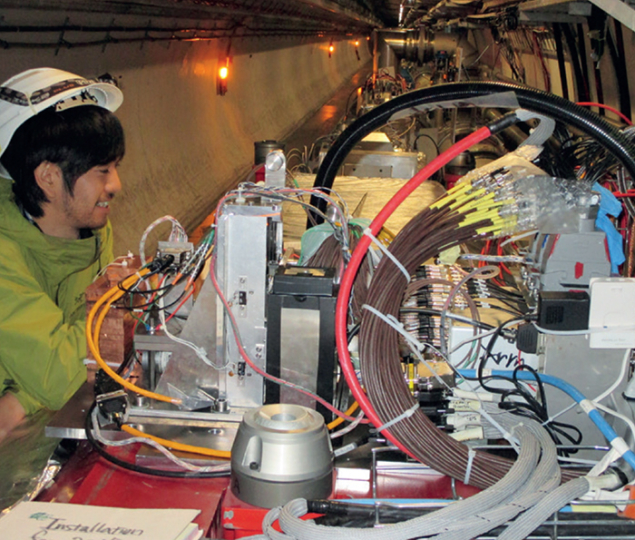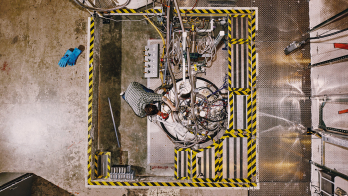The Large Hadron Collider forward (LHCf) experiment measures neutral particles emitted around zero degrees of the hadron interactions at the LHC. Because these “very forward” particles carry a large fraction of the collision energy, they are important for understanding the development of atmospheric air-shower phenomena produced by high-energy cosmic rays. Two independent detectors, Arm1 and Arm2, are installed in the target neutral absorbers (TANs) at 140 m from interaction point 1 (IP1) in the LHC, where the single beam pipe is split into two narrow pipes.
After a successful physics operation in 2009/2010, the LHCf collaboration immediately removed their detectors from the tunnel in July 2010 to avoid severe radiation damage. The Arm2 detector, in the direction of IP2, came back into the tunnel for data-taking with proton–lead collisions in 2013, while Arm1 was being upgraded to be a radiation-hard detector, using Gd2SiO5 scintillators. After completion of the upgrade for both Arm1 and Arm2, the performance of the detectors was tested at the Super Proton Synchrotron fixed beam line in Prévessin in October 2014. Both Arm1 and Arm2 were then reinstalled in the LHC tunnel on 17 and 24 November, respectively.

Image credit: T Sako.
The installation went smoothly, thanks to the well-equipped remote-handling system for the TAN instrumentation. During the following days, cabling, commissioning and the geometrical survey of the detectors took place without any serious trouble.
LHCf will restart the activity to relaunch the data-acquisition system in early 2015, to be ready for the dedicated operation time in May 2015 when the LHC will provide low luminosity, low pile-up and high β* (20 m) proton–proton collisions. At √s = 13 TeV, these collisions correspond to interactions in the atmosphere of cosmic rays with energy of 0.9 × 1017 eV. This is the energy at which the origins of the cosmic rays are believed to switch from galactic to extragalactic, and a sudden change of the primary mass is expected. Cosmic-ray physicists expect to confirm this standard scenario of cosmic rays based on the highest-energy LHC data.
Another highlight of the 2015 run will be common data-taking with the ATLAS experiment. LHCf will send trigger signals to ATLAS, and ATLAS will record data after pre-scaling. Based on a preliminary Monte Carlo study using PYTHIA8, which selected events with low central activity in ATLAS, LHCf can select very pure (99%) events produced by diffractive dissociation processes. The identification of the origin of the forward particles will help future developments of hadronic-interaction models.








